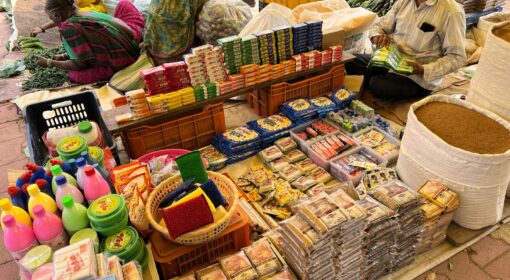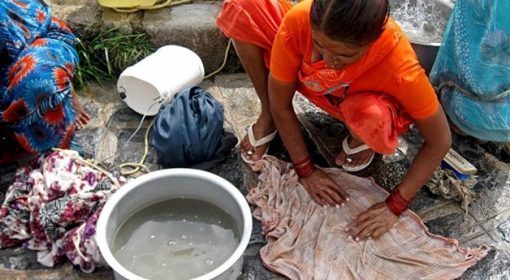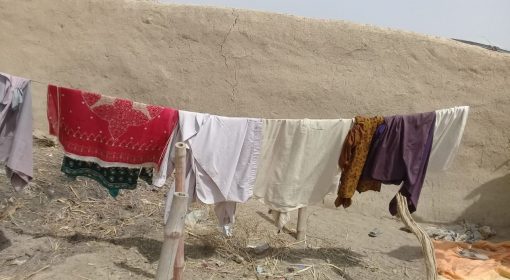By CongCong Li, Frank van Steenbergen, Salma Enan, Meghna Mukherjee
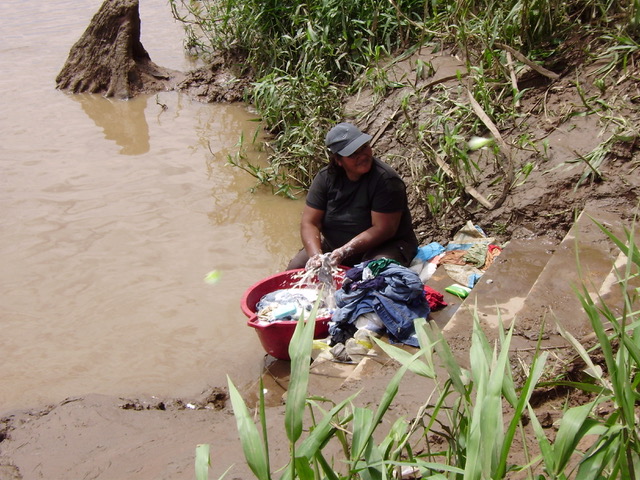
Cold water laundry practice
A notable trend in global laundry is the shift toward lower-temperature washing. Cold water washing is common in the US and is gaining popularity in other well-to-do economies. Cold water laundry is a major energy and carbon emission saver. Most energy consumed during a household machine wash goes toward heating the water. The US market suggests that significant energy and carbon savings can be achieved if one load per week is changed to cold water for an entire year. For an individual household, this simple switch can save 65 kWh or 3.3 therms of energy, which equates to 0.032 metric tons of CO₂ emissions avoided. This reduction is comparable to:
- 007 fewer cars on the road,
- 77 miles not driven, or
- the electricity needed to power 0.003 homes.
At a national level, if every household in the U.S. made this change, the impact would be even greater. The country could collectively save 2007 million kWh and 166 million therms of energy, preventing 2.3 million metric tons of CO₂ emissions. This is equivalent to:
- 200,000 fewer cars on the road,
- 5 billion miles not driven,
- powering 240,000 homes, or
- offsetting carbon emissions equivalent to the amount captured by 2.2 million acres of forest.
Switching to cold water for laundry is a simple yet powerful way to reduce energy consumption and lower carbon footprints while maintaining effective cleaning results. In addition, washing with cold water has other advantages, such as preserving fabric quality, maintaining colors, and minimizing shrinkage. However, it requires longer washing cycles, improved washing techniques, and most importantly, the application of more effective detergents.

Cold washing in emerging economies
Cold water washing is also practiced in emerging economies, yet in a different way and for various reasons. For millions of poor people, washing clothes by hand in cold water is a daily reality. Many wash their clothes and linens in streams, ponds, or by drawing water from courtyard wells. Furthermore, heating water is difficult and time-consuming. White clothes and linen may be washed with hot water and bleach, but dark clothes are usually not. Similarly, even for some that have access to machine washing, frequent power load shedding makes it impossible to use high-temperature laundry programs.
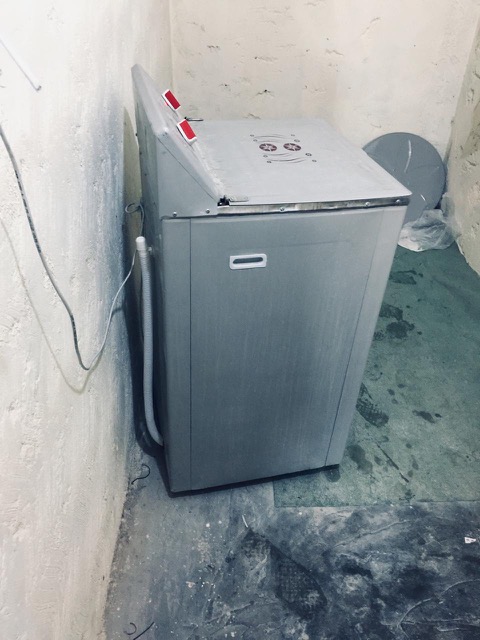
vHowever, washing with cold water is less effective at removing stains and controlling odors, and, more critically, it fails to eliminate pathogens from the laundry. This is important because soiled clothes and linens harbor many bacteria, viruses, fungi, and parasites (see Table 1). With regular soaps and detergents, clothes need to be washed in water at 60°C with sufficient soaking time to kill off pathogens effectively. Extended sunlight drying is another important practice to remove pathogens. As a result, laundry becomes a potential source of disease, affecting not only the person wearing the clothes or reusing the towel but also the individual doing the washing. It is a major factor leading to public health and hygiene challenges in both households and healthcare settings.
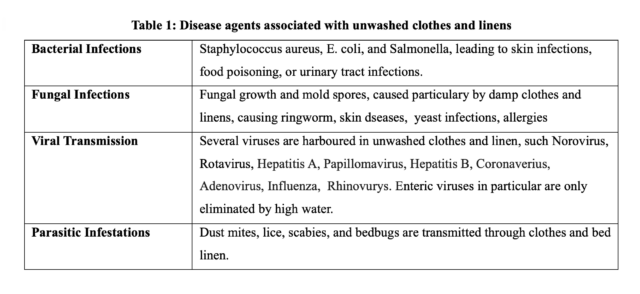
Enzyme-based detergents
This blog, therefore, calls for actions to develop and promote improved laundry practices in energy-constrained environments. Specifically, there is a need for affordable yet more effective detergents with specialized cold-water enzymes and sanitizing agents. These ingredients ensure effective cleaning at temperatures below 30°C, particularly targeting certain viruses and bacteria. Enzyme-based detergents are emerging as promising solutions. Enzymes are also called “green chemicals”, and are widely applied in laundry, textiles, and other industries. The idea of using enzymes dates back to 1913 when Otto Rohm introduced the idea of using pancreatic enzymes as a laundry cleaning aid (Kumar et al., 1998). The product was marked as a presoak detergent under the brand name Burnus. It enjoyed moderate commercial success and was sold for about 50 years in European markets. Other manufacturers also have a strong record with cold water detergents, such as Tide and Unilever, that sell the classic enzyme-enriched Biotex.

Enzymes could effectively break down various stains, including proteins, fats, and carbohydrates, even under lower temperatures and high pH conditions. For instance, proteases break down protein stains, while lipases target fat stains. Importantly, enzymes could also break down the protein shells of viruses and bacteria, helping to improve health and hygiene. Enzyme-enriched detergents could help enhance fabric quality and maintain color vibrancy, which are important for those who cannot afford too many clothes. Additionally, Enzymes in detergents could help reduce the reliance on high water quality because they remain effective even in hard water or water with impurities.
Market opportunities
The market opportunities for cold-water detergents tailored to the conditions of the many in emerging economies are huge. According to a recent market report, the global detergent enzymes market was valued at USD 1.5 billion in 2023 and is expected to grow to around USD 2.7 billion by 2032 with a Compound Annual Growth Rate (CAGR) of 6.8% during the forecast period(DataIntelo, 2024). The entire detergent industry sells USD 300 billion. The enzyme penetration is highest in Europe and the US, but growing in other regions. The growth potential is especially significant in emerging economies. There is a need to serve a similar transition to low-temperature machine washing in Asia, Africa, and Latin America, saving energy and carbon emissions. There is also a large scope to serve those who still wash mainly by hand – to develop detergents that are effective and affordable in these conditions – competing with low-quality, sometimes even spurious ones. One key challenge is the stability of enzyme-based detergents, as they may lose their effectiveness when exposed to high temperatures, extended shelf life, or harsh chemicals. There is a need to look both at the detergent formula and supply chains, yet there is a large market of unserved people waiting to be served.
(This blog is prepared as part of the LIFT-US Initiative.)
Reference List
[1]Cameron, B. A.(2007).Laundering in cold water: Detergent considerations for consumers. Family and Consumer Sciences Research Journal, 36(2), 151-162.
[2]DataIntelo.(2024). Detergent Enzymes Market Report 2024.
[3]Downes, S. (2024, April 27). Walmart and Tide Campaign: Why Cold-Water Laundry is Best. Sustainability Magazine.
[4]Filip, H. , Ratna, H. (2024, April 26). Cold Wash: Embracing a Central Growth Strategy in Laundry Care.
[5]Kind Laundry. (n.d.). What Is an Enzyme Laundry Detergent?
[6]Kumar, C. G., Malik, R. K., & Tiwari, M. P. (1998). Novel enzyme-based detergents: an Indian perspective. Current Science, 75(12), 1312-1318.
[7]Mars, C., Cold Water Wash Initiative, Home & Personal Care Working Group, The Sustainability Consortium, & Arizona State University & University of Arkansas. (2016). Technical Brief: Benefits of using cold water for everyday laundry in the U.S. 4.
[8]Novozymes(n.d.). A beginner’s guide to enzymes in detergents
[9]Sustainable Brands(2024). Cross-Industry Collaborations Turning the Tide on Cold-Water Washing.
